Uluwatu, Bali
Uluwatu Eco Resort
Overlooking the turquoise waters of the southernmost coast of Bali and almost two kilometres of coral sand, is this Nyang-Nyang site earmarked for the Six Senses group as an eco-resort distinct from any other.
Far from expressing the ‘bale’ pavilion-style architecture typical of the island, a pure landscape and engineering driven solution was needed to overcome the extreme site constraints and environmental challenges whilst maintaining the existing land-use and its community of low-impact farmers.
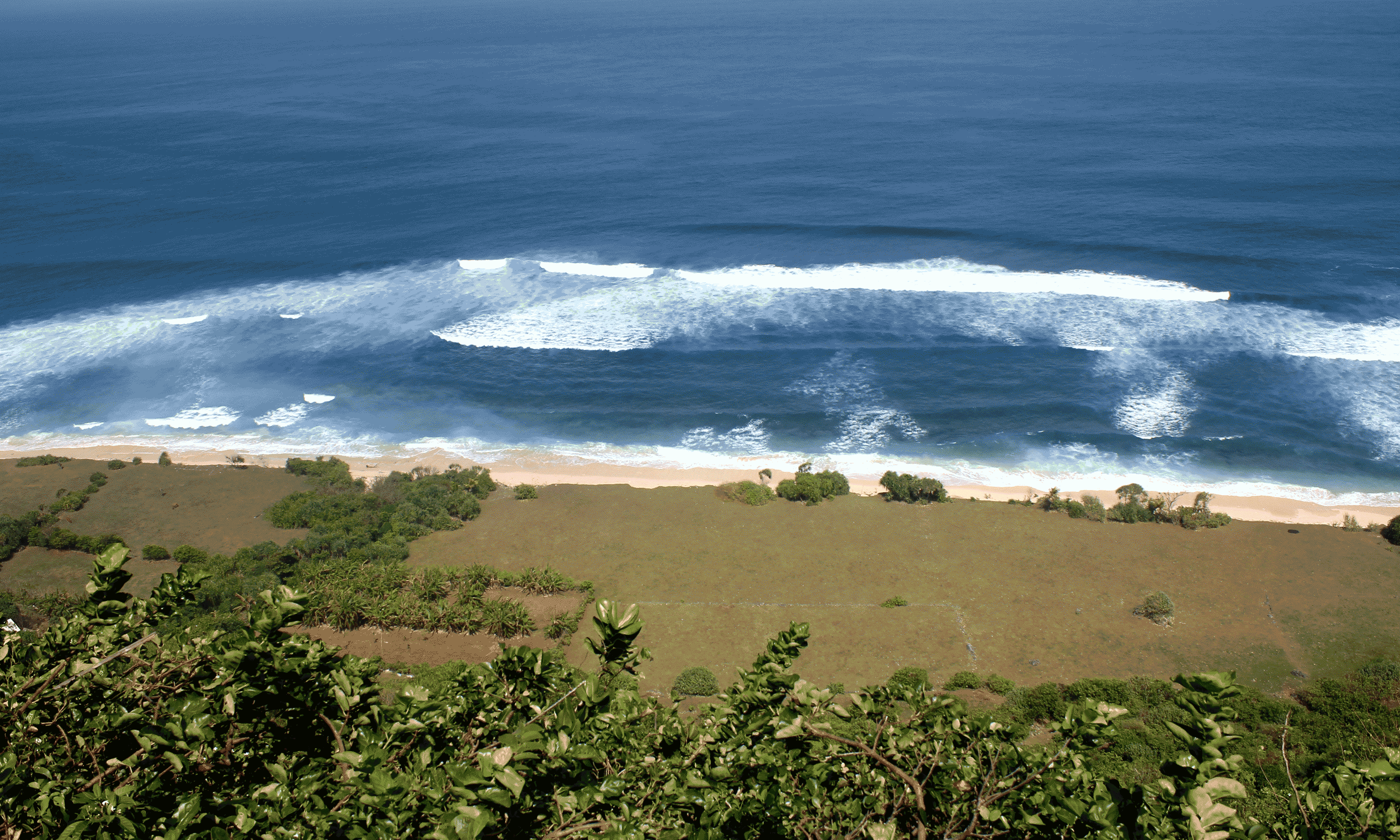
Informing this extraordinary design is a remarkably steep yet accessible site. It is characterised by some 90 metres change of level that takes in lushly vegetated steep slopes that in part plunge to a rocky sea edge and also to a flat grassy headland that sits just above the shoreline.
The proposal presents clusters of accommodation types stretched across the site, ordered by an emergent logic scripted to discover the best building opportunities while protecting the slope integrity and vegetative cover for the continuation of the existing land-use and protection of its biodiversity. All service and initial guest arrival access is subterranean and initial discussions involved the transfer of over 2 million tonnes of excavated lime-stone to other infrastructure projects on the island.
Site planning accommodates a Recording Retreat cluster, 38 Cave Villas, 22 Bamboo Houses, and a 250-bed 5 star Hotel.
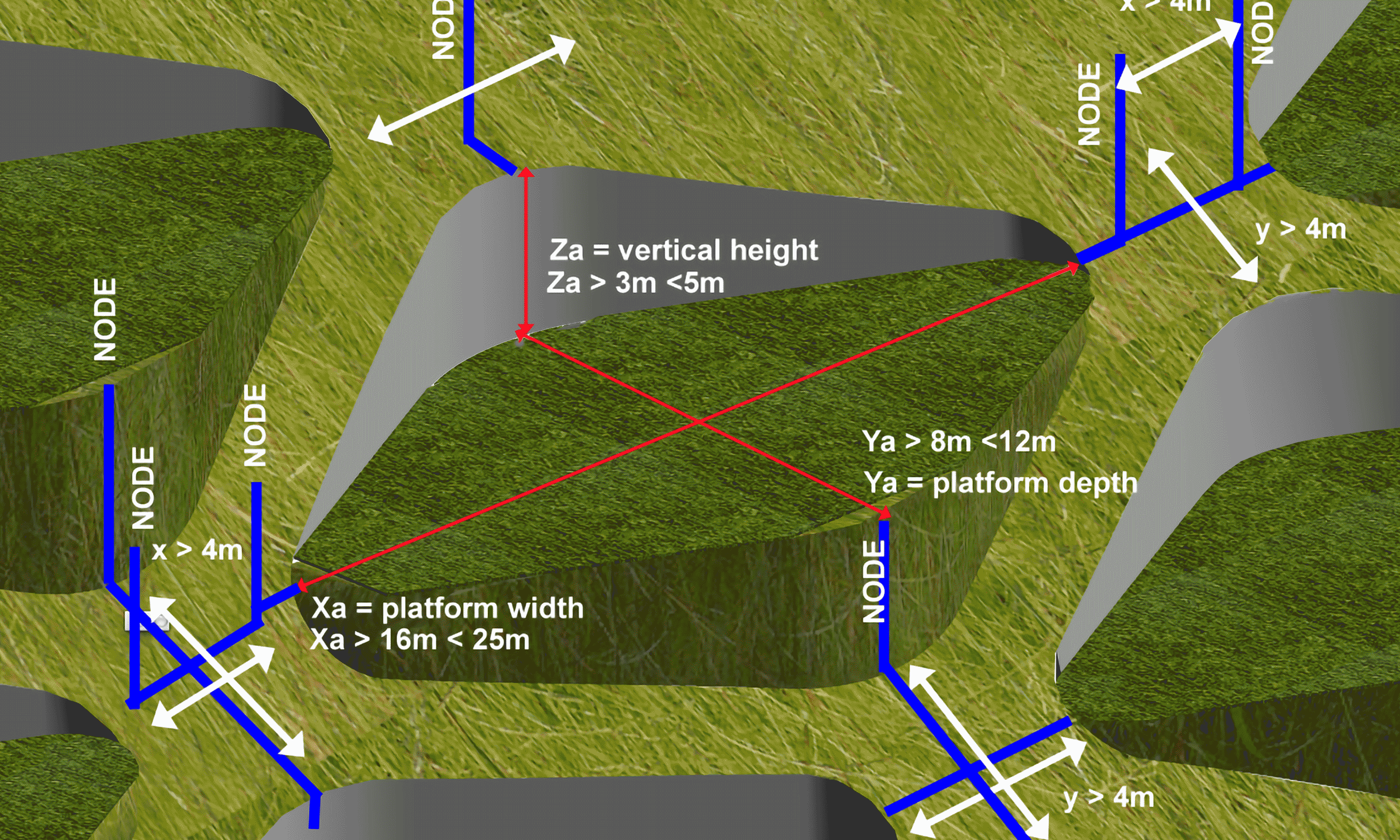

The diagonal arrangement of the Cave Villas allows easier navigation two-and-from the beach on foot.
Grasshopper scripting was employed to maximise a diagonal continuity of landscape that could be traversed on foot, i.e. diagonally, determining the optimum cut-and-fill platforms for the Cave Villas which in turn created an idea stacking system for the natural ventilation of the villas and internalised access to them.
The Cave Villas offer an exquisite sense of prospect and refuge from winds, but with unobstructed views east and west. Guests within the protective and generous womblike space look out through a thatch and vegetation shrouded opening, over their personal terrace and infinity pool to a deserted seascape with its morning hanging mists and clear waters.
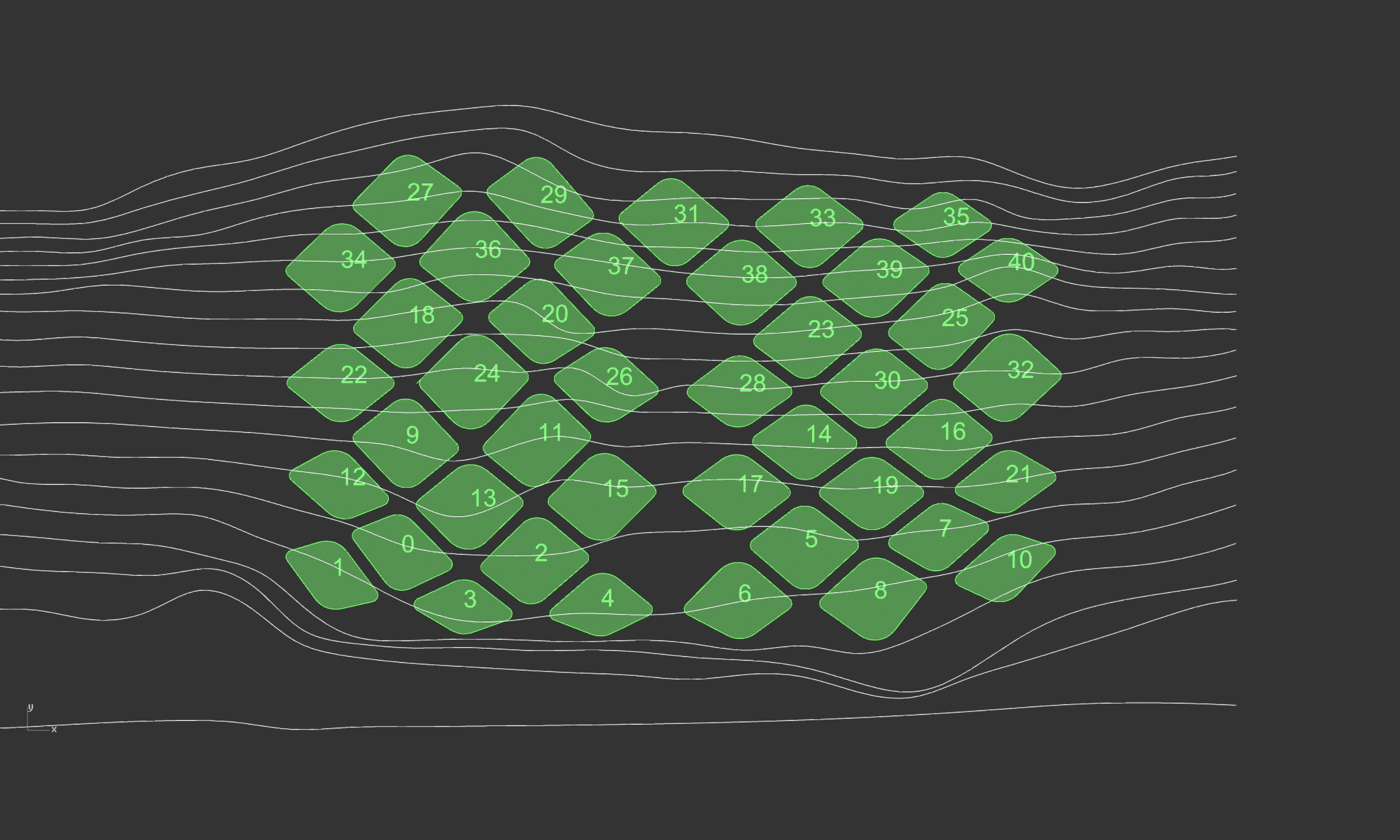
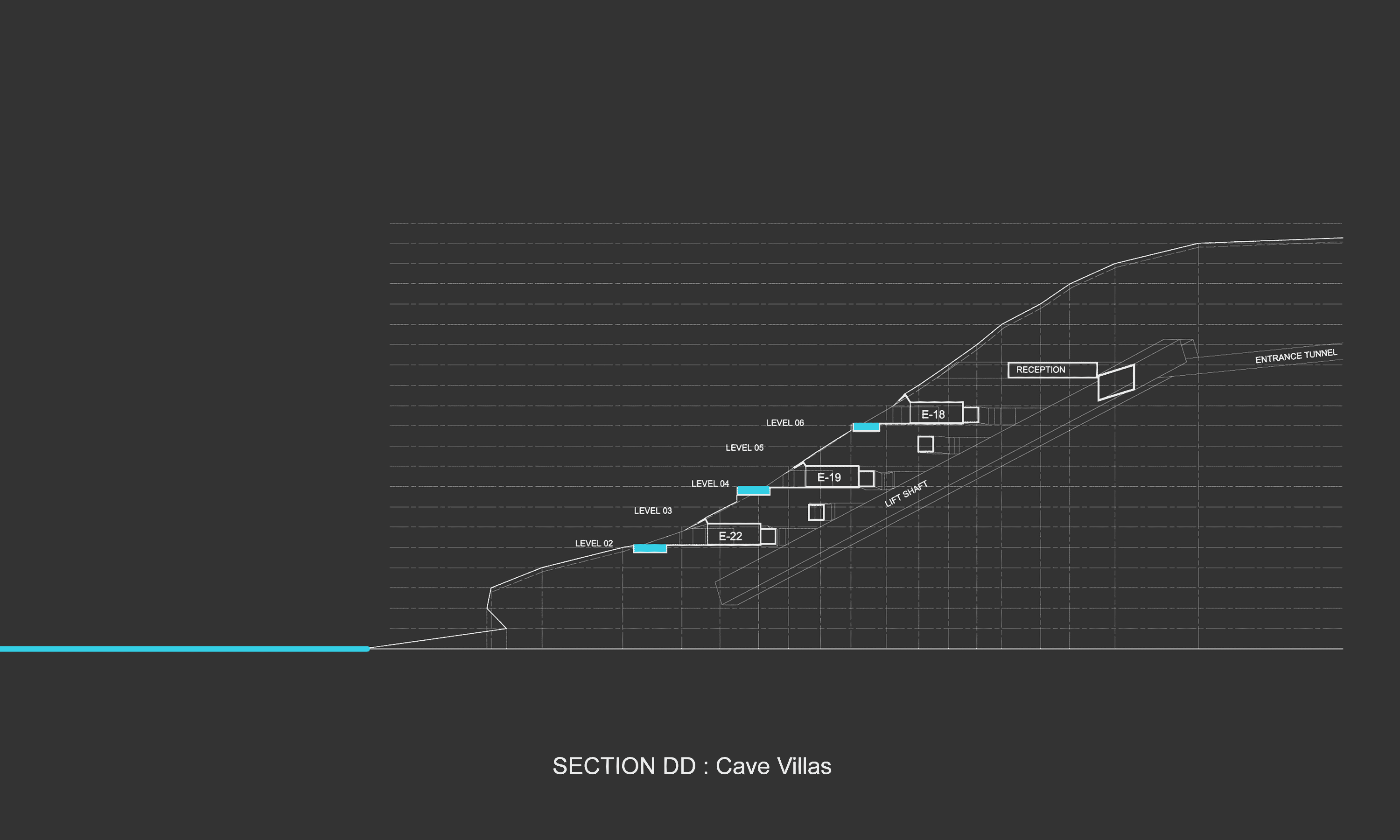
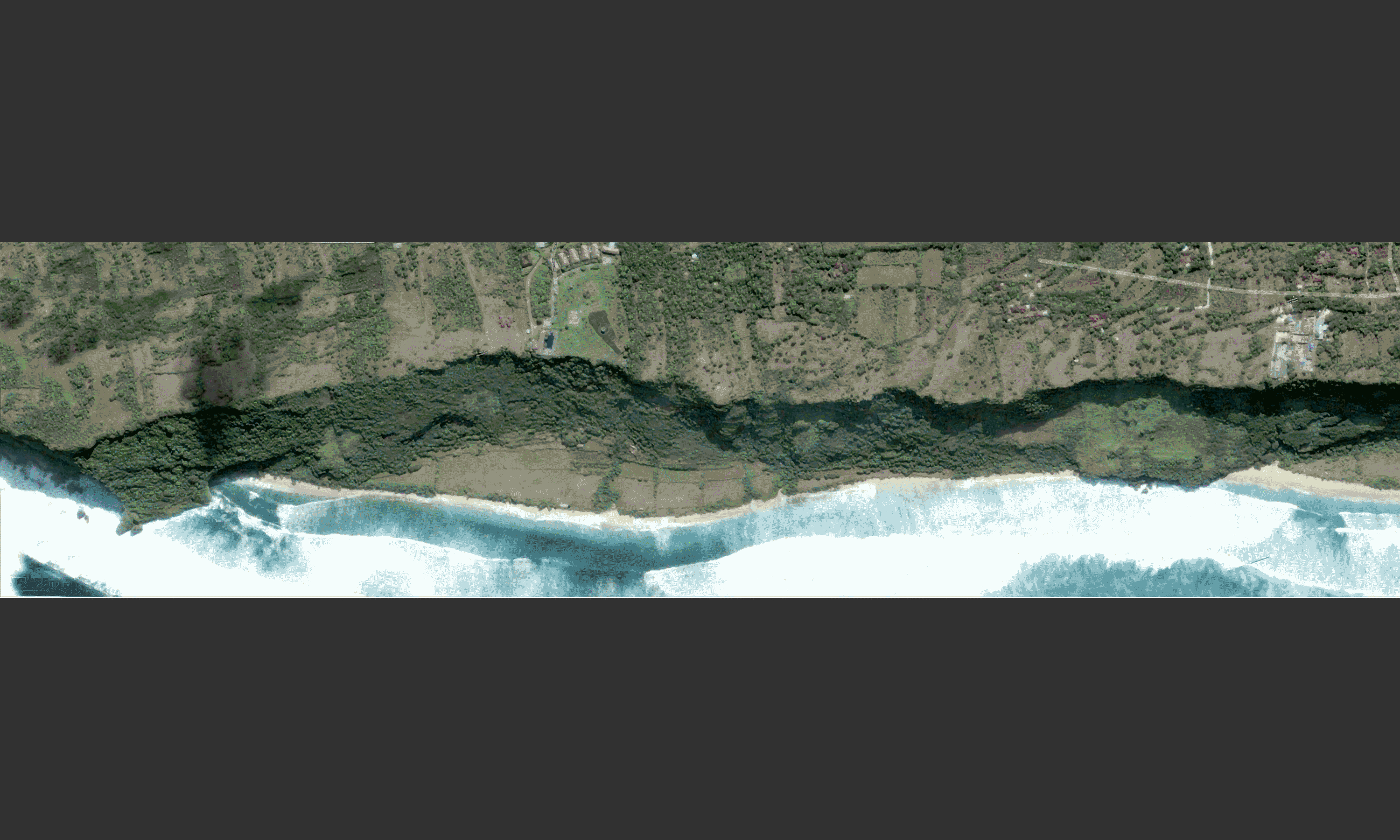
The snake-skin like site plan is the function of a script that discovered optimal cut-and-fill platforms based on a uniform minimum cave threshold height logic.

View of the Indian Ocean from the dining level within one of the Cave Villas.

A split level within the unit improves the site lines and stacking ability across the slope.

Low impact aesthetically and in final use, the contiguity of the landscape is preserved so that fauna are able to continue their full use of the site.

Existing native species only are permitted in the landscape improvements, including the ubiquitous Cocos Nucifera which is a Balinese religious and cooking staple.

The hotel, itself set within a large natural cavelike recess, is virtually hugged by its cliffside ‘jungle’ landscape.
The troglodytic approach to the bulk of the accommodation (which is underground) is a high-cost but ultimately low environmental impact solution which was seen as key to sustaining the agrarian lifestyle of the current land-owners and adjacent communities while allowing eco-tourists to experience and contribute to their livelihood.
Views toward the development, from all directions, experience landscape as the dominant element as opposed to built form. This is a supreme achievement given the conditions, particularly as it didn’t necessitate a reliance upon new planting and extensive landscape works, but was achieved through the protection of existing vegetation, courtesy of visionary and sensitive design thinking.
Words - Roybn Harding













